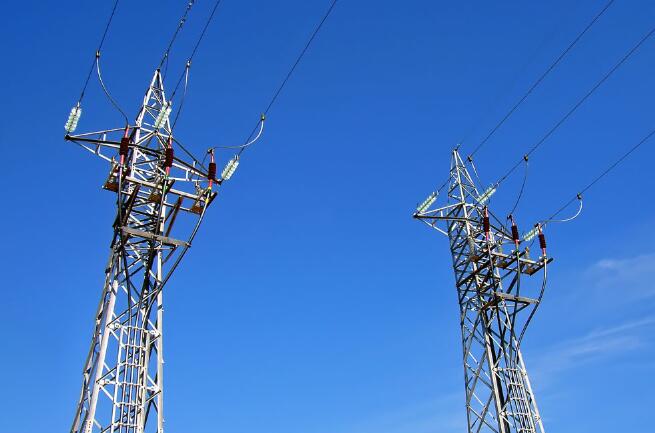- Home
- Products
- Certificates
- Cooperation
- About Us
- News
- Contact
Contact
Contact
Feb. 28, 2025
Overhead lines are an essential part of power transmission and distribution, ensuring electricity reaches homes, businesses, and industries worldwide. With various types of conductors available, choosing the right overhead line components is crucial for efficiency, safety, and cost-effectiveness. This guide will explore different types of overhead lines, their applications, and why materials such as bare stranded copper conductor wire, aluminum conductor steel reinforced overhead lines (ACSR), ABC cable, and stranded all aluminum conductor (AAAC) are widely used.
For buyers, procurement managers, and manufacturers, understanding the strengths and applications of these conductors is key to making informed purchasing decisions.

Overhead power lines are conductors used to transmit and distribute electrical energy above ground, supported by poles or towers. These lines are classified based on voltage levels and material composition:
Low-voltage overhead lines (up to 1 kV) – Commonly used for residential and rural power distribution.
Medium-voltage overhead lines (1 kV to 69 kV) – Used in industrial areas and city grids.
High-voltage transmission lines (69 kV to 765 kV) – Designed for long-distance power transmission.
The selection of conductor materials significantly impacts the efficiency, durability, and cost of the transmission system. Let’s explore the most common conductor types used in overhead lines.
Bare stranded copper conductor wire is widely used in power distribution networks due to its high electrical conductivity and durability. Unlike insulated cables, bare conductors rely on air insulation and are often employed in overhead line applications where superior conductivity is required.
Key Benefits:
High conductivity – Copper has the best electrical conductivity of all commercial metals.
Durability – Excellent resistance to corrosion and mechanical wear.
Low energy loss – Ensures efficient power transmission.
However, due to the higher cost of copper compared to aluminum, its use is generally limited to applications requiring minimal energy losses and maximum reliability, such as substations and urban grid connections.
Aluminum conductor steel reinforced (ACSR) overhead lines are among the most commonly used conductors in power transmission. These conductors combine the high conductivity of aluminum with the tensile strength of a steel core, making them ideal for long-span installations.
Why Choose ACSR?
Lightweight yet strong – Aluminum reduces weight while steel reinforcement provides mechanical strength.
Cost-effective – ACSR is more affordable than copper conductors, making it a preferred choice for long-distance transmission.
Durability – Withstands extreme weather conditions, including wind, ice, and corrosion.
ACSR conductors are extensively used in high-voltage transmission networks where cost and strength are crucial factors. Industry data suggests that ACSR remains a dominant choice in power transmission due to its optimal balance between cost and performance.
ABC cable (Aerial Bundled Cable) is a modern alternative to traditional bare conductors, particularly for low-voltage and medium-voltage distribution networks. Unlike conventional overhead lines, ABC cables consist of multiple insulated conductors twisted together, reducing the risk of short circuits and electrocution.
Advantages of ABC Cables:
Enhanced safety – The insulation prevents accidental contact, reducing power theft and electrocution risks.
Ease of installation – Requires fewer supporting structures, reducing infrastructure costs.
Weather resistance – Performs well in harsh environments, including high humidity and extreme temperatures.
ABC cables are particularly popular in urban and rural distribution networks, where safety and reliability are top priorities. Market trends show increasing demand for ABC cables due to growing concerns over power reliability and theft prevention.
The stranded all aluminum conductor (AAAC) is an alternative to ACSR, consisting of high-strength aluminum alloy strands. It offers better corrosion resistance and higher conductivity than ACSR but lacks the steel reinforcement that provides additional tensile strength.
Benefits of AAAC Conductors:
Lightweight and corrosion-resistant – Ideal for coastal and high-humidity environments.
Higher conductivity than ACSR – Improves power efficiency.
Longer lifespan – Less prone to rust and degradation.
AAAC is commonly used in medium-voltage distribution networks where mechanical strength is not a primary concern. The growing preference for lightweight, high-efficiency conductors makes AAAC an attractive option for many utilities.
When selecting overhead line conductors, several factors should be considered:
Voltage level – Higher voltage transmission requires materials with better strength and conductivity.
Environmental conditions – Coastal areas demand corrosion-resistant conductors like AAAC, while regions with high winds need reinforced options like ACSR.
Cost-effectiveness – While copper conductors are superior in performance, aluminum-based conductors offer significant cost savings.
Safety requirements – ABC cables are ideal for urban areas due to their insulated design, reducing electrical hazards.
Industry Insights
According to global market research, the demand for high-performance overhead conductors is expected to grow by 5.7% annually, driven by increased investments in power infrastructure and renewable energy projects. Governments worldwide are pushing for grid modernization, leading to higher adoption of efficient conductor technologies like ACSR and ABC cables.
Understanding the different types of overhead lines is crucial for procurement specialists, electrical engineers, and utility companies. Whether selecting bare stranded copper conductor wire for high-conductivity applications, ACSR for long-distance power transmission, ABC cables for improved safety, or AAAC for corrosion resistance, the right choice depends on project requirements and budget constraints.
As a manufacturer or buyer, investing in the right overhead line components ensures long-term reliability and efficiency in power transmission. By staying informed about industry trends and innovations, businesses can make strategic purchasing decisions that enhance performance and cost savings.
For inquiries about bulk purchasing, technical specifications, or custom manufacturing of overhead line conductors, feel free to contact a reputable supplier to ensure you get the best materials tailored to your needs.